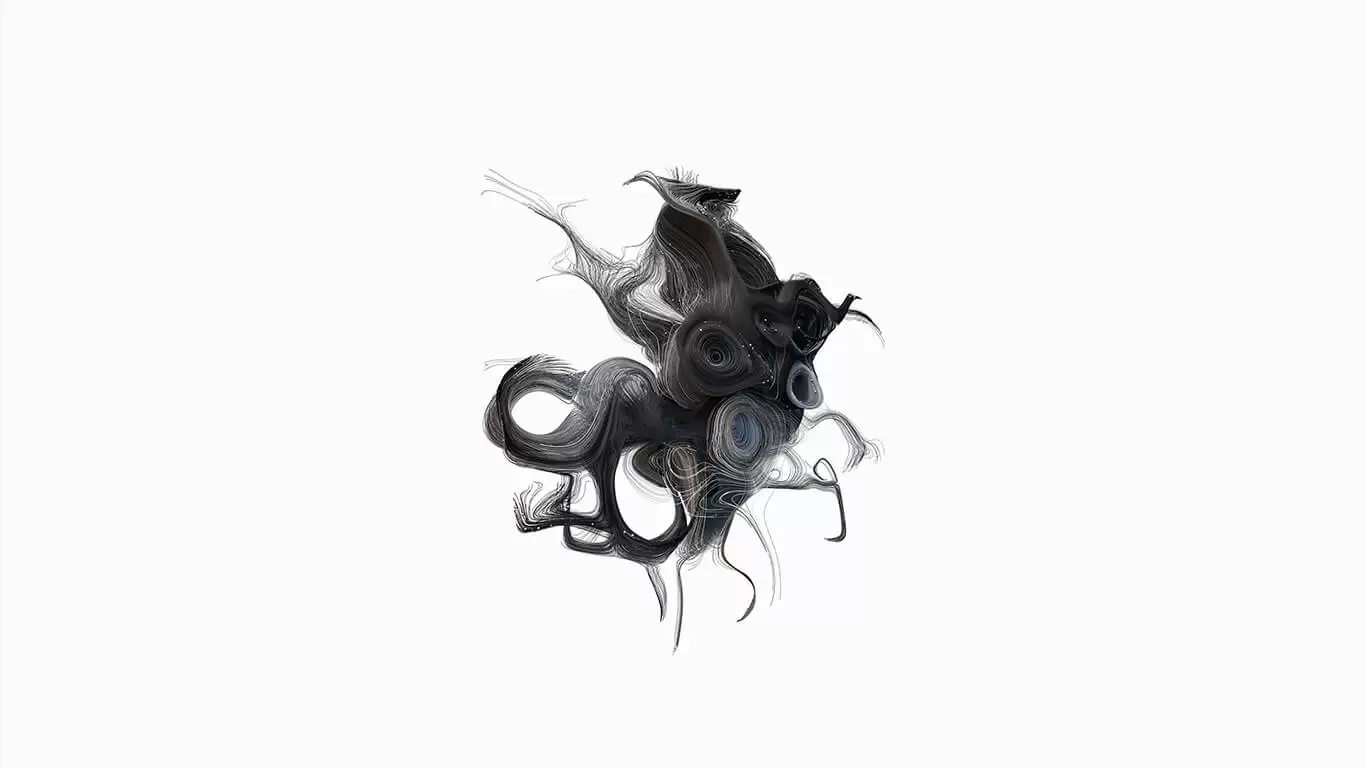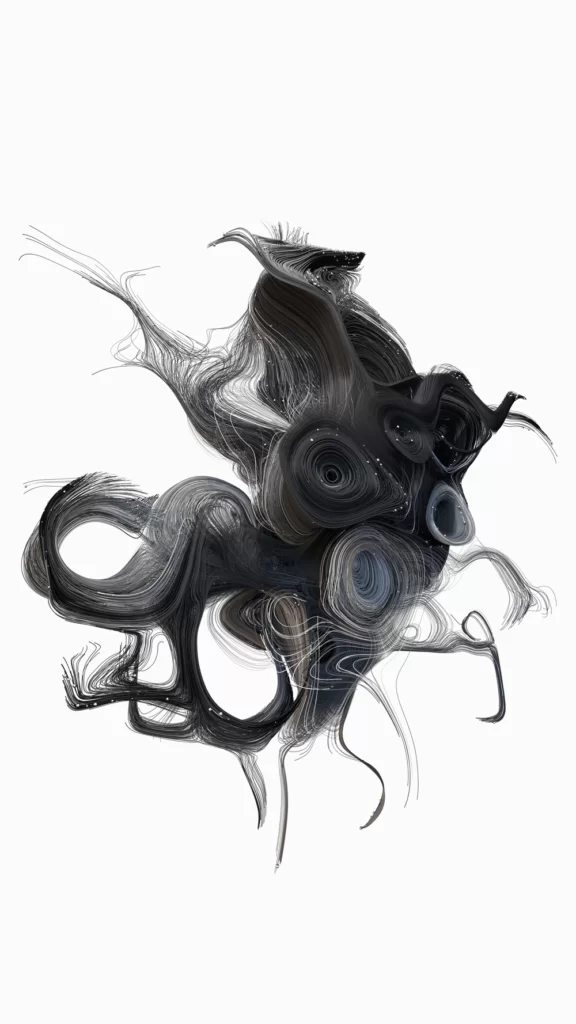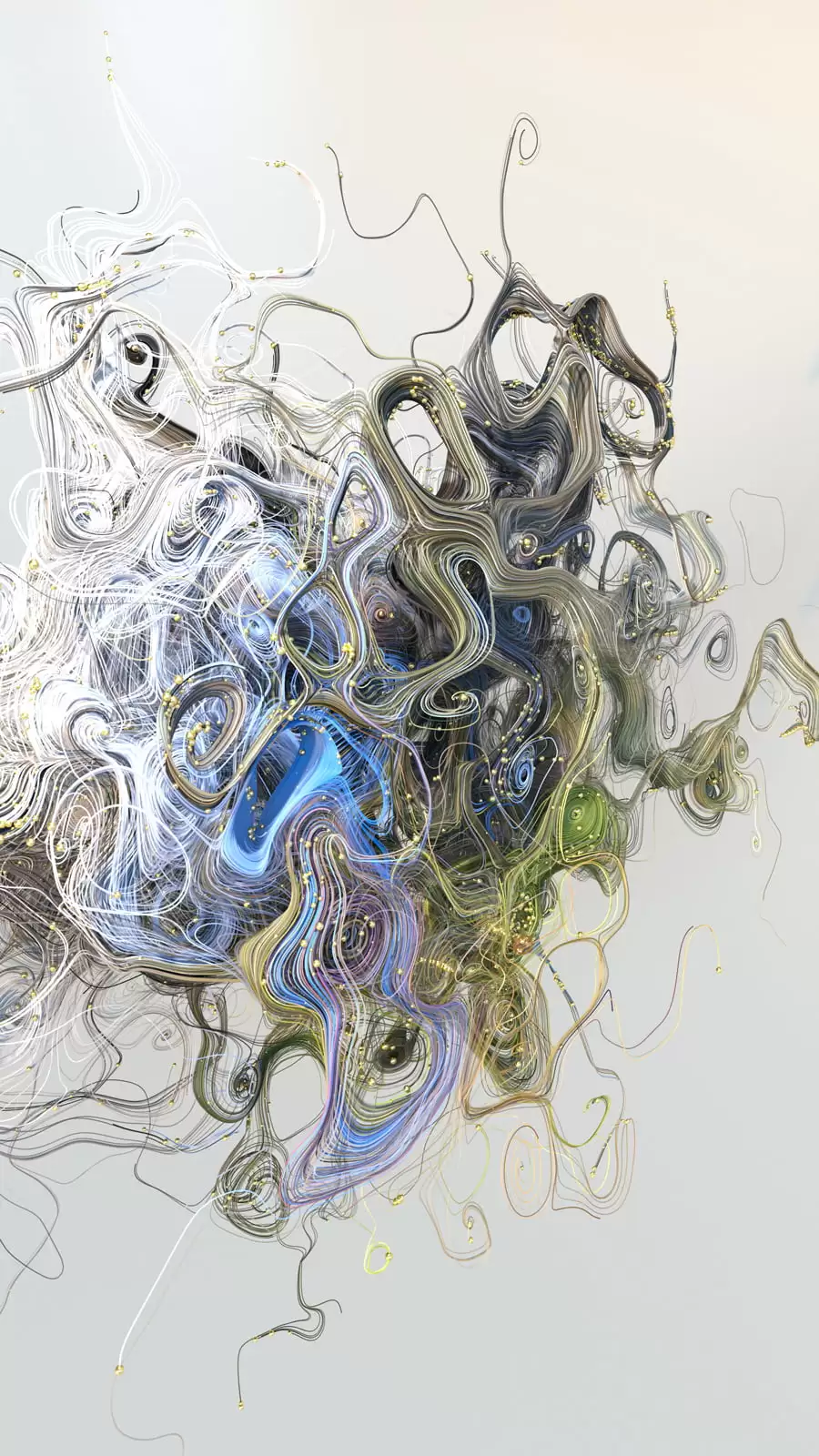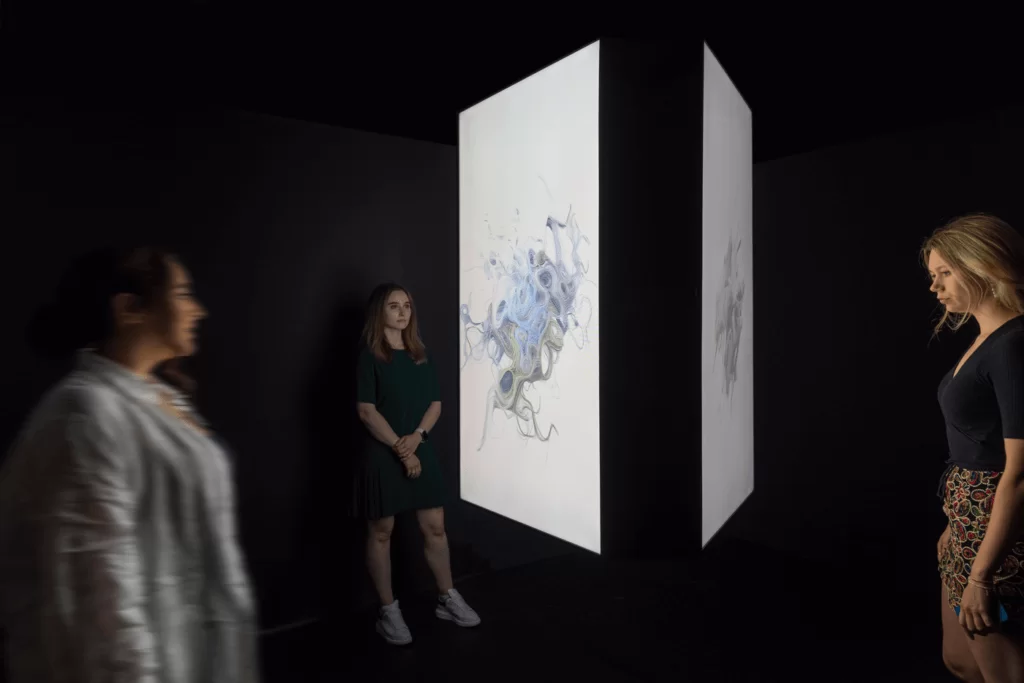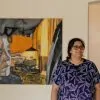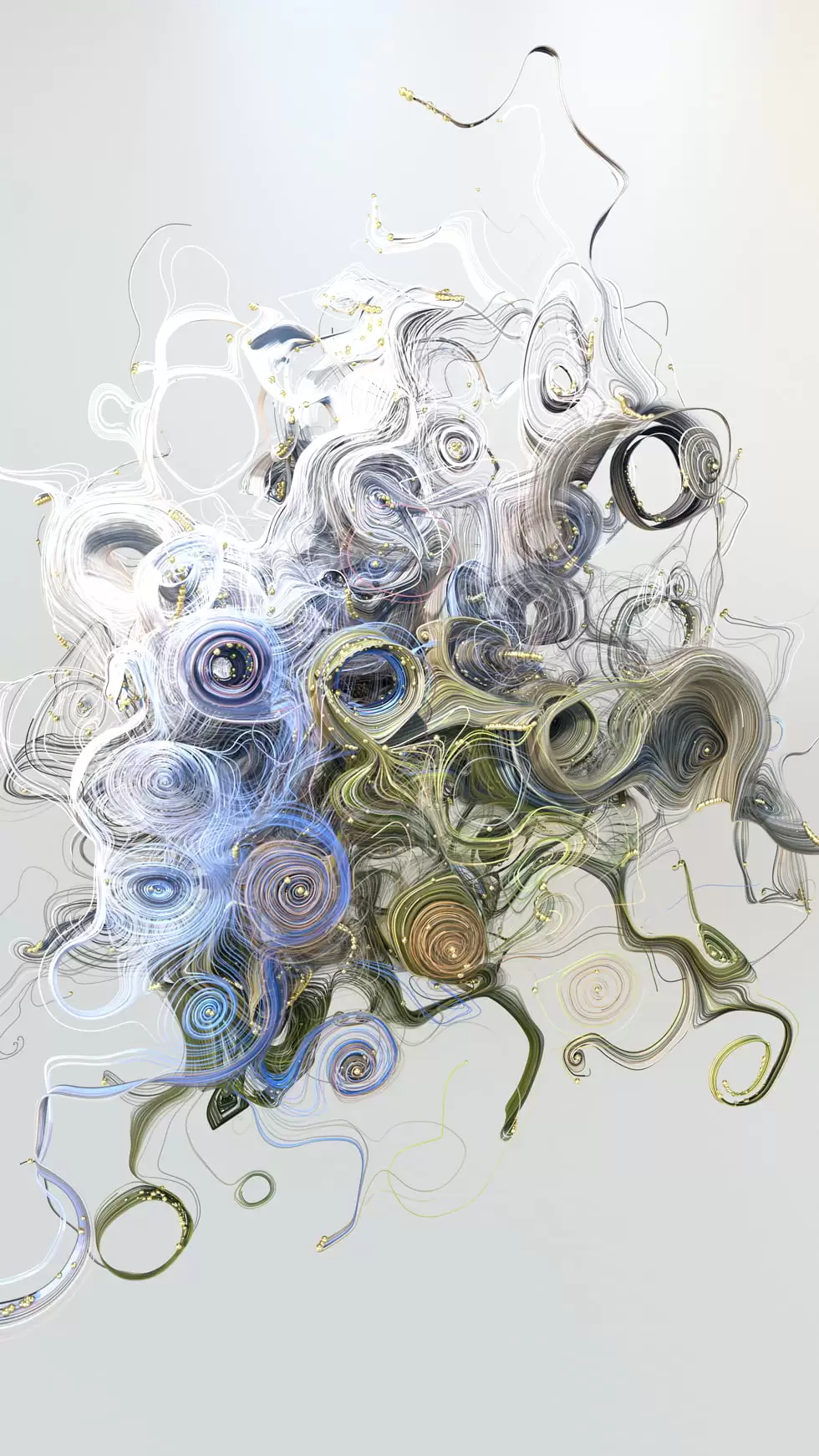UK-based digital artist Brendan Dawes is committed to sparking thought, imagination and dialogue. His practice centres around the concept of time, space and memory, drawing inspiration from multiple sources and intertwining these elements to shape his work. He conceives interactive installations, online experiences and abstract environments born from code through a generative process involving data and machine learning.
I’ve always been fascinated with the creative possibilities of computers
Brendan Dawes
In his current body of work, a three-piece series part of his exhibition, “Moments Spent with Others”, with GAZELL.iO, he explores the beauty behind moments that may initially seem insignificant and how the theory of time and space is connected to the magnetic feeling of interacting with others.
In these works, we witness Dawes recreating fleeting moments into datasets and algorithms, depicted in celestial visualizations rippled with intricate waves of shade, colour and depth. That resembles a life form viewed under a microscope. This is what art looks like in data-driven practice.
Dawes’ analytical and innovative approach has aided him in winning the Lumen Prize and Aesthetica Art Prize, as well as having his work in the permanent collection of New York’s Museum of Modern Art. He even had his work 3D printed on the International Space Station. We caught up with Brendan to learn more about his practice, his new body of work, and his latest exhibition, “Moments Spent with Others”, with GAZELL.iO.
Brendan Dawes, Moments Spent with Others is until 2nd of July, 2022 at GAZELL.iO
Q: Hi Brendan, can you please introduce yourself for those who don’t know you?
A: I’m a digital artist living in the UK, and for the last twenty years, I have been using computers to create work born from code, often using data from every day to ask questions about the world around us.
Q: Can you tell us how you got started in arts and the direction in which your work is going?
A: I’ve always been fascinated with the creative possibilities of computers. Over many years that has taken different forms, including a short-lived recording contract during the Manchester rave scene in the early nineties. I couldn’t play an instrument but could construct songs by combining samples and programming music-making machines. I realise now that this was at the core of how I make things – the combination of ready-mades to create new things. My brother often joined me on stage when we played clubs like Cream, but he was there to make me look better and fill the stage out a little.
When that didn’t work out as planned, and by that, I mean I earned absolutely no money; I took a job in a factory to pay the bills but ended up working there for eight awful years. All the time, I was constantly honing my coding skills. Eventually, in 1996 I found this thing called the web and managed to get a job as a web designer. I knew then this was where I wanted to concentrate on creating work that provoked a reaction, using data in all its forms to prompt questions and elicit emotional reactions from those it resonated with.
Q: As an artist, how would you describe your art?
A: I create environments for others to play within. It’s created to provoke a reaction. There needs to be an emotional response from the viewer; otherwise, it’s failed.
Q: Throughout your artist career, you have been intrigued by the intersection between art and science, with Data visualization at the core, producing aesthetically poetic experiences. Can you tell us about your creative process and what brought about your fascination to employ data as a visual language?
A: Well, I believe you can see everything as data; everything is a number. The words I’m typing now, the spaces between those words, the pauses I take as I try and answer these questions in a hopefully interesting way – all data. That data becomes a rich input source – materials I can use to tell a story, ask questions, and inspire new work. I’m not interested, however, in data visualisation – my work is much more abstract than that. I’m not interested in providing answers; I want the work to be a lens to ask more questions.
I like to leave gaps in my works – cracks that can let shadows in. Without that data formed, work is often soulless – at least to my eyes. I need poetry to wrap around the data as I think those things create an emotional connection.
Q: Your current exhibition, “Moments Spent with Others”, explores the beauty behind those intimate moments that catch us and how the concept of time and space connects to the feeling of human interaction. Expressed in digital visualizations, can you tell us more about the exhibition?
A: I loved the silence during lockdown – I’m always very comfortable with my own company, and the lockdown was a chance for me to take stock, pause, and appreciate the lack of noise and the beauty inherited in the quietness. Yet what I did miss was when I would speak at design festivals around the world and spend time with my friends, meet new people, discuss new ideas, see new places and have new experiences.
It made me realise that some of my favourite moments are spending time in the company of others, so with that in mind, I began to formulate the idea for the show, a celebration of the importance of these often what we might think of as trivial everyday moments.
The exhibition displays three such moments spending time on a park bench with my wife Lisa, watching films with my Dad late at night and hanging out with my late friend in New York eating Pizza.
Q: Can we speak about “I’ll Take A Slice”, a key piece in the exhibition that vividly visualizes data on a moment between you and designer Hillman Curtis whilst eating pizza in New York. Can you tell us how data from that moment is portrayed through this piece?
A: I took photographs taken at the time together with footage of New York traffic and streets and compiled them to send them through an AI to create what’s called a latent walk-through as the AI tries to create images similar to the originals.
I’m doing this because I think our memories of events are often fuzzy rather than crystal clear. This then gave me source material to play with. Then I constructed an algorithm base on time so that the structure you see is informed by the dates of the memories.
The further in the past the event, the less dense and less complex the memory – things coalesce more than they do in more recent memory, like in the Everything is Perfect piece. You may also notice that colours are more saturated at the front of the work and as they recede to the back – and through time itself – they become desaturated. This is my own interpretation of how the ravages of time affect our memories of these events.
Q: You’ve had tremendous success with NFTs, selling out a collection on Nifty Gateway in under sixty seconds as well as having your work auctioned at Sotheby’s Natively Digital. What’s your opinion on the future of NFTs and their close affiliation with art?
A: I actually don’t consider myself someone who makes NFTs. NFTs are a mechanism to prove ownership of a digital asset, whether the deeds to a house, an object in the metaverse or art. They are not the goal. The goal is art, digital art. Before NFTs, it was hard to sell art which existed digitally.
Often you would sell an analogue form of the digital by way of a print, which is ridiculous when you think about it, especially when our lives are so integrated with digital technology. NFTs changed that, so now you could prove ownership of a digital asset. Of course, there are incredibly creative ways you can use smart contracts as part of the creative process so that the contract in itself is art, and I think that’s a really interesting area to explore. We’ve only just begun on this journey.
Q: What’s next for you as an artist?
A: I’m working with documentary filmmaker Gary Hustwit on a unique kind of documentary about Brian Eno. We’ve been working on a generative film engine for the last two years, having the ability never to be the same twice and to take many different forms in its creation and exhibition. We’re now in total production using over 400 hours of Eno footage that has been digitised from his personal archive. The project is due to be revealed in 2023.
On June 20th, I’ll be presenting my latest collaboration in New York, which I can’t wait to show everyone. It’s another music collaboration, but more details to follow soon.
I’ve got a few more shows I’m working on, including a solo show in Beijing, a group show in London and one in Barcelona slated for next year. Across all of that, though, the main thing for me as an artist is to keep moving forward, to ask myself, “does this deserve to exist?”, “does this offer something new” “does this resonate with people?”
Q: Lastly, what does art mean to you?
A: A way to deviate from expected patterns, to see the world in new ways and leave us with more questions than answers.
https://www.instagram.com/brendandawes
Brendan Dawes, Moments Spent with Others is until 25th June, 2022 at GAZELL.iO
©2022 Brendan Dawes, GAZELL.iO


